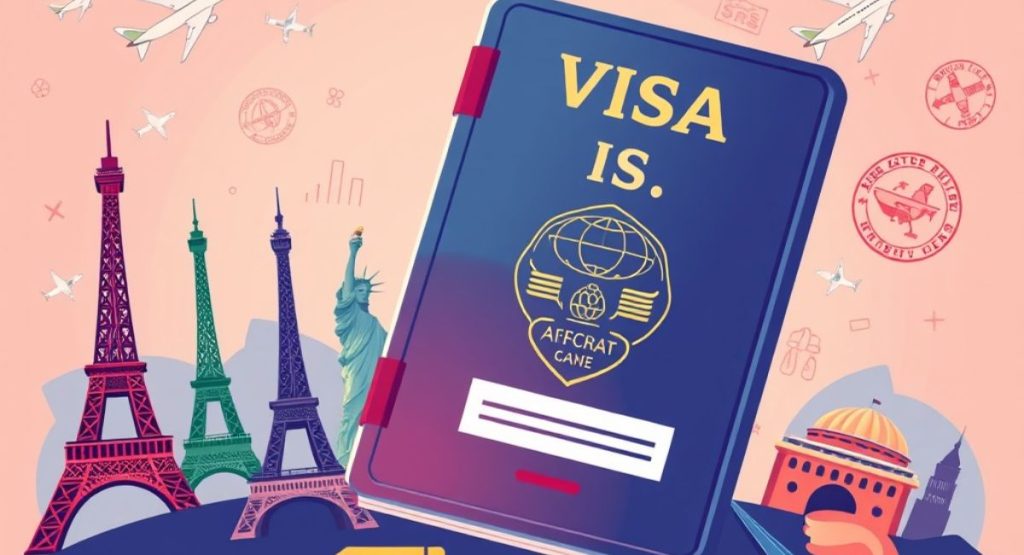Applying for an Indian visa can be exciting as it marks the beginning of a new adventure, whether for tourism, business, or study. However, the process can be challenging if you are not fully prepared. Even minor oversight can delay approval or worse, result in rejection. To ensure a smooth experience, it is essential to avoid common mistakes during the application process. Here, we outline the most frequent errors and explain how you can steer clear of them.
Not Understanding the Different Types of Indian Visas
One of the major errors applicants make is misunderstanding the different categories of visas available for India. India offers several types of visas, such as tourist visas, business visas, medical visas, and e-visas. Many applicants assume that one type of visa fits all situations, which can lead to confusion and incorrect applications. Indian Visa for Business.
For example, if someone intends to attend a business meeting but mistakenly applies for a tourist visa, their application may be rejected. Each visa type has distinct requirements, purposes, and documentation needs. It’s crucial to thoroughly research which visa is appropriate for your visit and its corresponding conditions. Take the time to carefully read the details on the official Indian visa website to ensure you’re applying for the correct category.
Providing Incorrect or Insufficient Documentation
Incorrect or incomplete documentation is one of the most common reasons behind visa rejections. Indian visa applications require specific documents, such as a passport with at least six months’ validity, recent passport-sized photographs, proof of travel arrangements, and other supplemental paperwork based on the type of visa.
Many applicants overlook these requirements, or worse, submit documents that do not meet the specified guidelines. For instance, submitting a photograph that does not meet size and formatting instructions might lead to outright denial. Similarly, failing to include proof of return travel or financial means to support your stay could result in unnecessary complications.
To avoid this mistake, make a detailed checklist of the required documents for your visa type and review it multiple times before submission. Double-check that all documents are clear, formatted correctly, and meet the stated requirements.
Failing to Adhere to Timelines
Timing is everything when it comes to applying for an Indian visa. Many applicants wait until the last minute to start the process, assuming that approval will be swift. This assumption can backfire, as each visa application entails processing time, which may vary depending on the visa type, country of origin, and the time of year.
For example, during the peak tourist season, processing times may be extended due to high application volumes. Additionally, if there are any errors or the need for additional verification, this could further delay the process. Some applicants also fail to account for the timeline differences between e-visas and regular visas, as e-visas usually have a shorter processing window.
To avoid this, start your application well in advance of your intended travel dates. It’s wise to apply at least four weeks ahead to address potential delays. For e-visas, check the earliest and latest timeframes within which you can submit your application.
Ignoring the Online Application Guidelines
With online submission becoming the primary mode of application for most Indian visas, many applicants make the mistake of ignoring the technical aspects of the process. Errors such as uploading files in the wrong format, omitting mandatory fields, or providing inconsistent information can lead to application rejection. Indian Visa for Medical Visit.
For example, the online system often requires specific image and document sizes, yet many people upload files that exceed these limits. Another common issue is failing to ensure that the information in your application matches the details in your passport.
To streamline your online application, carefully read the instructions provided on the official portal. Ensure that your internet connection is stable while filling out the form and upload files within acceptable size limits. Save a copy of your successful submission and track your application status for updates.
Overlooking the Importance of Accurate Information
Attention to detail is vital when preparing your Indian visa application. A seemingly minor inconsistency — such as spelling errors in your name, incorrect dates, or mismatched identification details — could result in immediate disqualification. Even small inaccuracies in your travel history could raise concerns and trigger further inquiries.
For instance, if the address in your passport differs from your current address in the application, you may be required to provide additional proof of residence. Failing to explain discrepancies clearly could complicate the process and prolong approval time.
To eliminate such errors, review every detail of your application at least twice before submission. It might help to have a friend or family member cross-check your details for added assurance. Precision and clarity are your best allies in this regard.
Skipping the Visa Terms and Conditions
Many applicants overlook the terms and conditions associated with their visa, which can lead to complications after the visa is issued. For example, tourist visas come with restrictions, such as the maximum duration of stay and limitations on the type of activities you can engage in while in India. Ignorance of these rules can land you in legal trouble.
Similarly, some visas might require registration with the Foreigners Regional Registration Office (FRRO) upon arrival in India. Failing to comply with this requirement could result in penalties or disruptions to your travel plans.
Always read the terms and conditions accompanying your visa carefully. If you’re uncertain, consult Indian embassy representatives or official contact points to clarify any doubts before arriving in India.
Underestimating the Importance of Travel Insurance
While travel insurance is not always mandatory for an Indian visa, underestimating its importance can be a costly mistake. Many travelers forget about unforeseen circumstances such as medical emergencies, lost documents, or trip cancellations, which can derail their plans. Without insurance, these situations may leave you vulnerable.
If you’re applying for visas like the medical visa, obtaining adequate travel insurance becomes even more crucial, as it demonstrates responsibility and preparedness. Make an informed choice by selecting an appropriate insurance plan that covers unexpected medical expenses, theft, and other contingencies.
Not Checking the Validity Period of the Visa
Another common oversight is failing to check the validity period of the visa and any associated conditions. Indian visas come with specific validity dates, as well as entry conditions like single-entry, double-entry, or multiple-entry. Mistaking the validity duration or the number of entries allowed can lead to issues at the border or during your stay in India.
For instance, an applicant who plans a long-term stay may accidentally apply for a short-duration visa, leading to trips being cut short. Similarly, failing to leave the country after your visa expires can make you subject to penalties or blacklisting for future entry.
Familiarize yourself with the terms of validity and ensure your travel plans align with them. If your itinerary changes, check whether your visa type permits extensions or multiple visits.
Neglecting to Prepare for Arrival Requirements
Finally, failing to prepare for arrival requirements in India is a mistake often made by first-time travelers. For most visas, it’s important to carry printed copies of your visa approval and ensure your passport has sufficient blank pages for immigration stamps. Some visas may also require additional documentation, such as a yellow fever vaccination certificate for travelers from certain countries.
Additionally, Indian immigration authorities may ask questions about the purpose of your visit, accommodation, or finances. Being unprepared to address these queries might result in undue delays at the airport.
To avoid hassle, keep physical and digital copies of your documents handy and prepare clear answers to any immigration queries. This ensures a smoother entry process upon arrival in India.
Final Thoughts
Applying for an Indian visa doesn’t have to be an overly complicated process as long as you’re aware of potential pitfalls. Key to this is understanding the visa type that fits your needs, providing accurate and complete information, adhering to timelines, and staying mindful of rules. By avoiding the common mistakes outlined above, you can ensure a stress-free application process and start your journey to India on the right foot.



